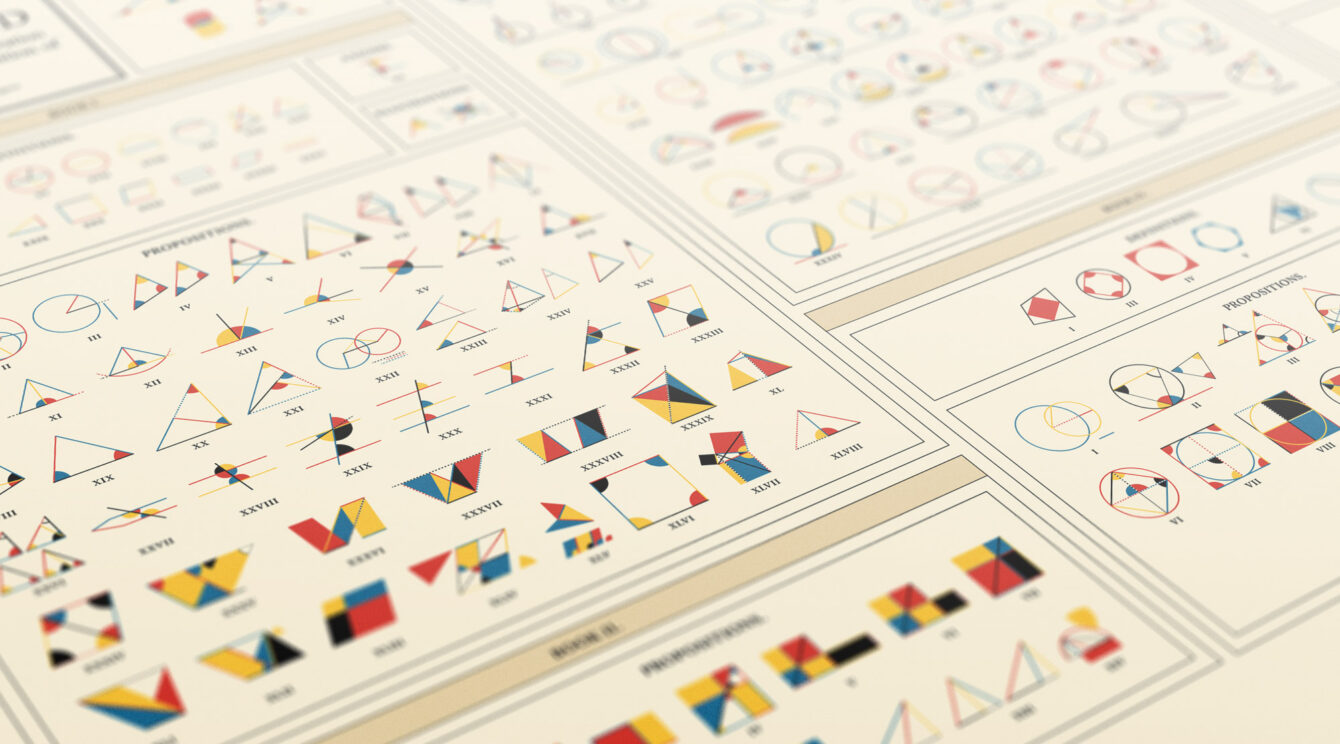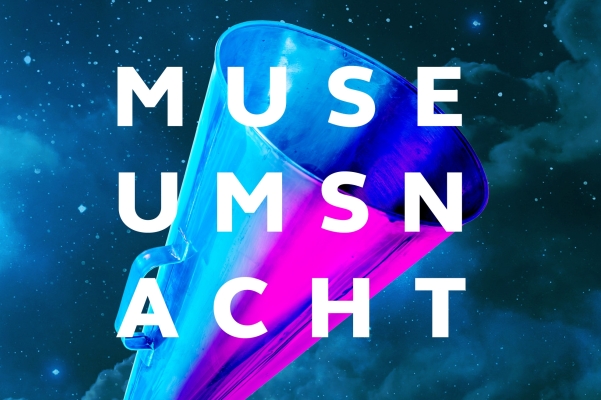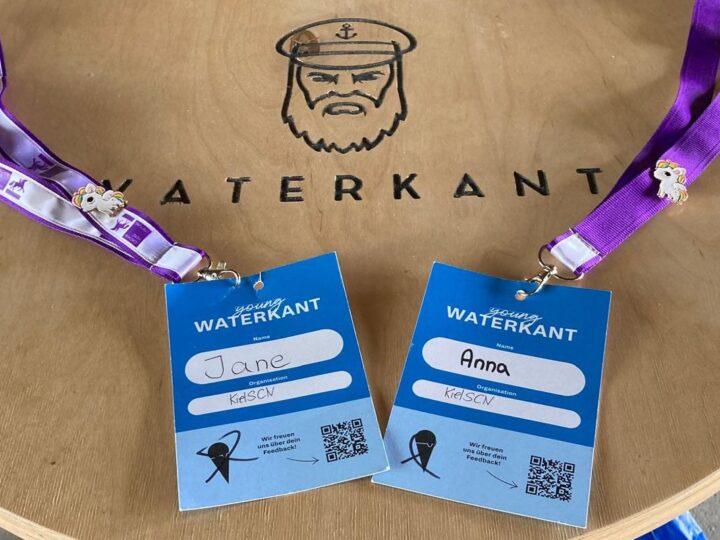VoM #5 – Euclid’s Elements
Euclid’s Elements – in 1847 and today
The work Elements by the Greek mathematician Euclid is considered one of the most famous and successful textbooks of all time. For a long time, the various editions, translations and adaptations were even the best-selling works in the world after the Bible. We have chosen two adaptations as our visualization of the month #5.
Byrne’s Euclid from 1847
In 1847 Oliver Byrne’s The first six books of the Elements of Euclid was published. The Irish mathematician’s adaptation is distinctive for its use of color illustration, which was unique for his time. He uses these instead of letters to indicate angles, edges, and shapes in order to illustrate the proofs given by Euclid. He utilizes a color and shape canon of contrasting primary colors and basic geometric shapes. This later became characteristic of the Neo-Plasticism style of art, as exemplified by Piet Mondrian. Today, the work therefore appeals in particular to target groups with an affinity for art and design, although the original intention was different.
At the same time, the work is interesting from a didactic point of view. Byrne makes an attempt to translate the abstract, which is the letters, into something concrete, which is the geometric figures. Instead of just naming angles, he also shows them. In this way, he aims to promote a better understanding on the learners’ side. And Byrne’s Euclid is also significant from a communication point of view. He creates a visual communication of scientific knowledge that is new and unique for the time.
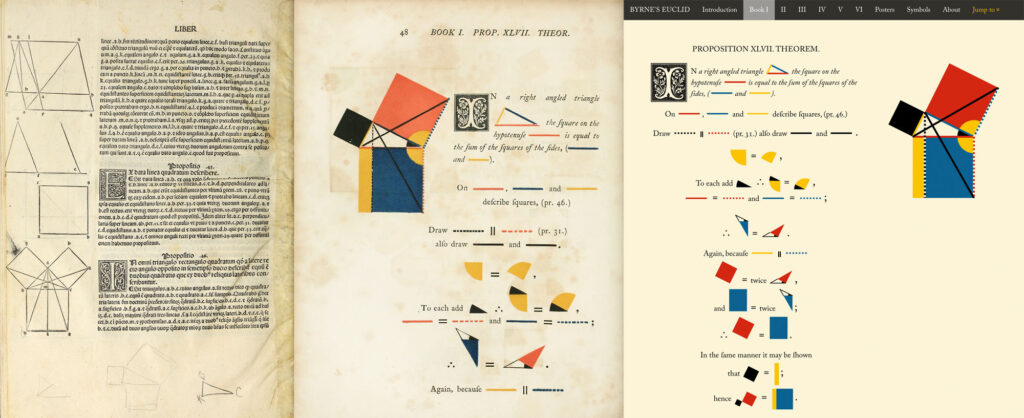
The online revision by Nicholas Rougeux
Designer Nicholas Rougeux from Chicago has translated Byrne’s Euclid into a digital tool. In doing so, he makes it accessible to an even wider audience. Cross-references between books and chapters, as well as efficient navigation, allow users to easily grasp the content. Rougeux also adds interactivity to the diagrams: shapes as well as associated text passages can be selected and highlighted. In this way, he supports Byrne’s intention of promoting understanding.
In addition, the online version uses fully digitally traced illustrations. Rougeux thereby avoids any possible loss of quality through reproduction of the original. At the same time, he creates interactivity by using the possibilities of the medium and allows multiple ways of using the drawings in different contexts.
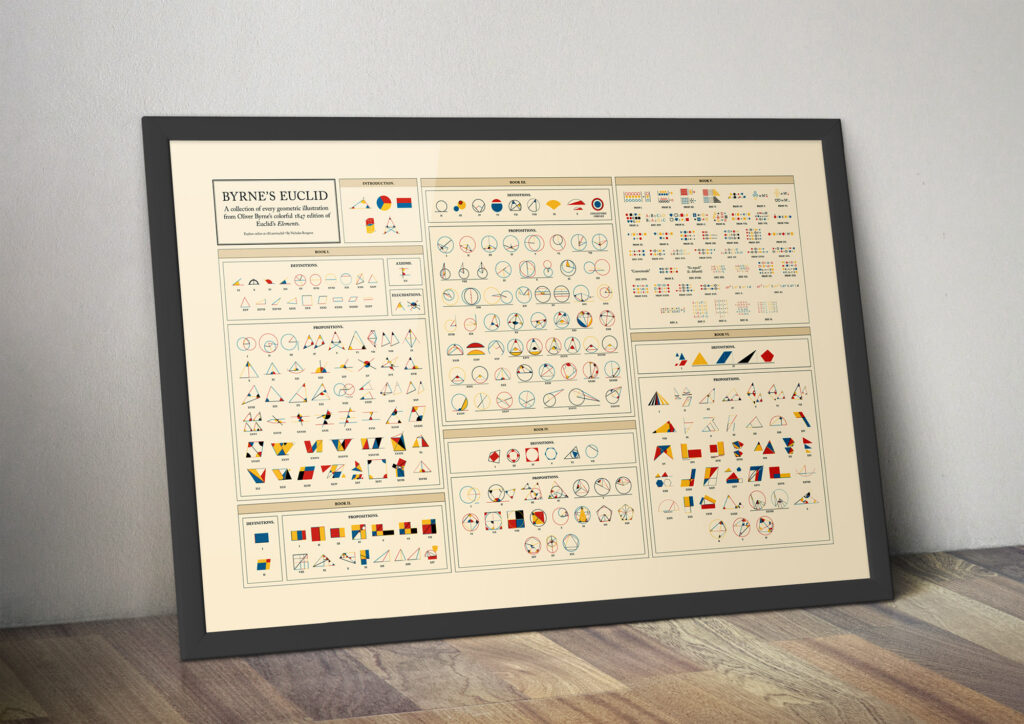
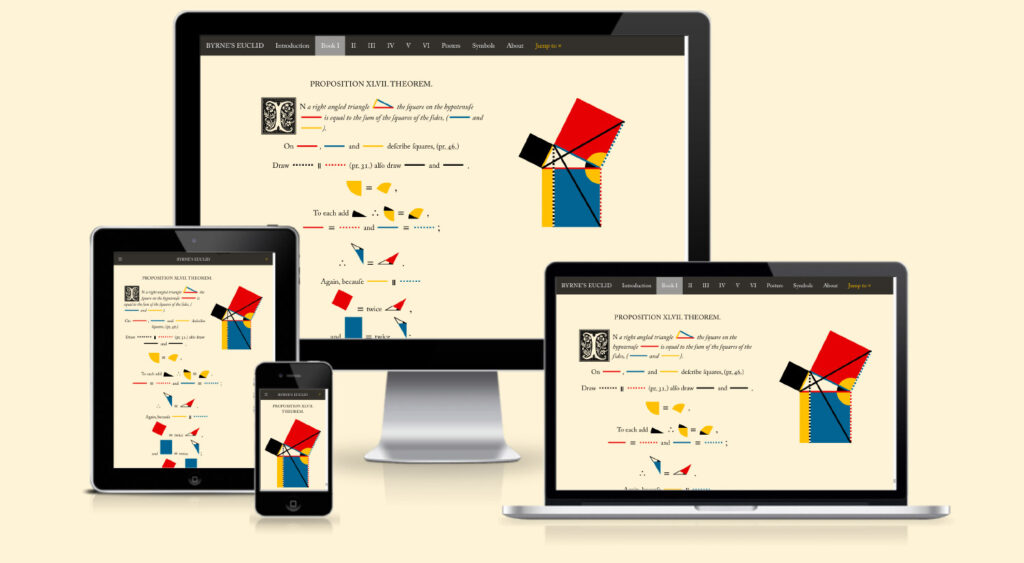
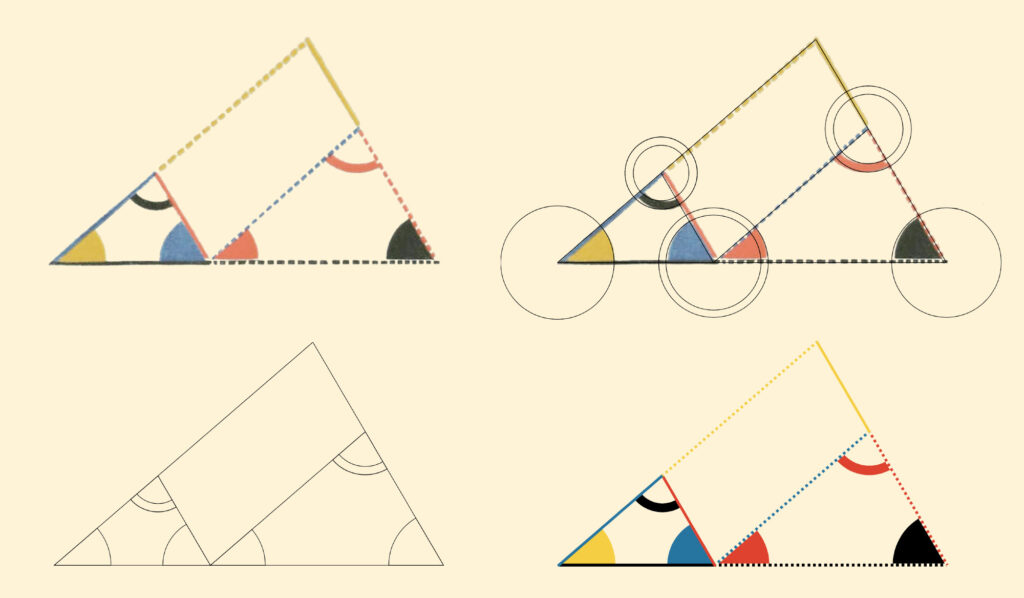
Interface between art, science and didactics
The location of Byrne’s work in the intersection between art, science and didactics is particularly interesting for the KielSCN. This is evident, among other things, in the reception of the work.
Both adaptations also have multiple possible uses. For example, Byrne’s Euclid can be found in the Science Museum in London, but has also been featured in exhibitions for artists’ books. This again shows that the work has had and continues to have an equivalent influence on the fields of science as well as art and design.
What is special about Rougeux’s work is that he transfers the book form into a digital medium. What is significant here is that he does not simply digitize text and images in the conventional way, but rather prepares and even expands the work in a way that is suitable for the media.
Discover Euclid’s Elements, Byrne’s Euclid and Rougeux’s Revision for yourself
All works are available in free online versions:
- Euclid: Elements
- Byrne’s Euclid: The First Six Books of the Elements of Euclid with Coloured Diagrams and Symbols
- Byrne’s Euclid: The First Six Books of the Elements of Euclid with Coloured Diagrams and Symbols – A reproduction of Oliver Byrne’s celebrated work from 1847 plus interactive diagrams, cross references, and posters designed by Nicholas Rougeux
All images © Nicholas Rougeux
About the Visualization of the Month
In our series “Visualization of the Month”, we feature an outstanding visualization on the second Wednesday of each month. One of the criteria for the selection is the extent to which it is aesthetically and emotionally appealing from a design perspective. In addition, we look at the information content. This also includes how the users of the visualization are supported in better comprehending complex contexts. The selection is made within the KielSCN team and involves expertise from the fields of information design, educational science and emotion research, as well as science communication research.
